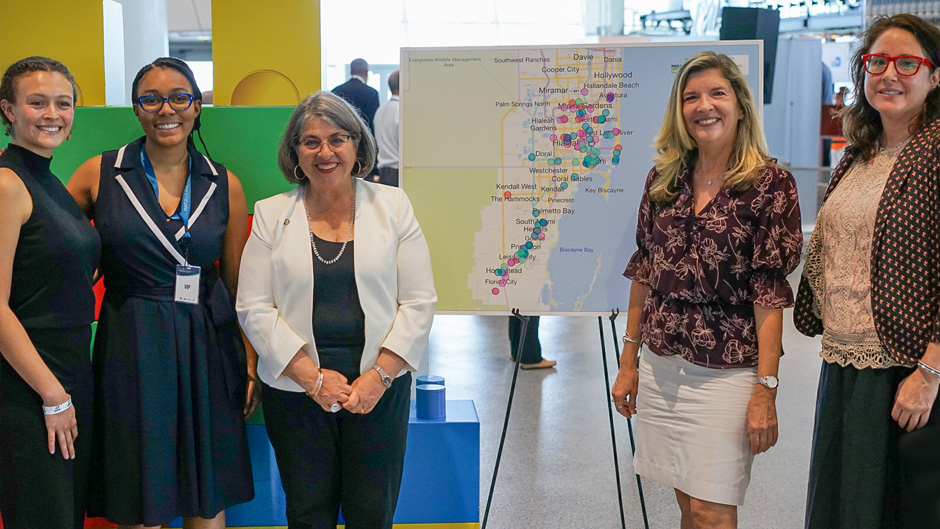In the past two years, Miami has experienced a real estate boom unlike others.
Along with rising home prices, monthly rental rates in Miami-Dade County have skyrocketed nearly 60 percent, compared to just 19 percent nationally, leaving those who live on the margins with fewer choices. Earlier this week, the U.S. Secretary of Housing and Urban Development Marcia Fudge declared Miami the “epicenter of the housing crisis.”
With rent and home prices outpacing nearby states, and Miami’s median wage and salary rates unable to keep up, leaders are working to address the county’s home affordability crisis.
“Residents in the most vulnerable communities of Miami are seeing their rents go up with no end in sight. And it could lead to the displacement of local residents, leaving them with no other choice but to leave Miami,” said Robin Bachin, founding director of the University of Miami’s Office of Civic and Community Engagement (CCE), senior associate dean for undergraduate education, and the Charlton W. Tebeau Associate Professor of History.
Yet county officials want residents to know there are options. To build a picture of where affordable housing is located, Miami-Dade County housing officials tapped the expertise of the CCE to help build a new Housing Affordability Tracker.
Unveiled this week at Mayor Daniella Levine Cava’s Building Blocks Housing Summit, the online tool will pinpoint the locations and progress of more than 18,000 affordable housing units that are in the development pipeline, under construction, or slated for completion by the end of 2023. That way, leaders in the community and housing industry can identify exactly where new affordable and workforce housing—dwellings that are affordable for families with the area’s median income and near jobs—is located throughout Florida’s most populous county, and when projects will be ready for residents.

“Everyone is talking about how we need more affordable housing in Miami, but how do you quantify it? And how can you tell people numbers? That’s what this tool is all about,” said Ignacio Ortiz-Petit, senior executive assistant to Michael Liu, director of Miami-Dade County’s Department of Public Housing and Community Development. “This tool will help to show people we aren’t just talking about housing, we are actually building units that will help alleviate this challenge that we are facing.”
The tracker will be available to the public on the county’s website, and according to Bachin, it likely will be used by people who work in the affordable housing and community development industry, as well as by urban planners, policymakers, and grassroots organizations that want to advise residents facing housing instability.
“The University of Miami is helping us to quantify the data that leaders, policymakers, and residents will use across the county,” Ortiz-Petit added.
To create the tool, Ortiz-Petit worked closely with Jen Posner, CCE’s senior manager for policy and programs, to give her all the information they had on affordable housing projects in Miami-Dade County. Then, Posner’s small team did its own research and contacted municipalities and developers throughout the county about affordable housing projects in process, while also scrutinizing local real estate news and listings.
“We were as exhaustive as we could be to make sure we found accurate and useful information to give a snapshot of the pipeline of affordable housing that we have on the horizon in Miami-Dade,” Posner said.
The tool allowed CCE to create a color-coded interactive map of the county with dots identifying each affordable housing location. When users click on each site, it gives the name of the developer, the property address, the number of units available, and the stage of the process—be it planning, permitting, or construction. With future grants, Posner hopes that her team can continue to update the tracker each quarter.
It is the second time that the University has worked with the county on such a tool. In 2019, CCE also helped create a previous Housing Affordability Tracker that also was lodged on the Miami-Dade County website, Bachin said.
The new tool was created with more user-friendly software, and the information is completely updated from 2019, when there were 14,000 new units of affordable housing developed throughout Miami-Dade County.

